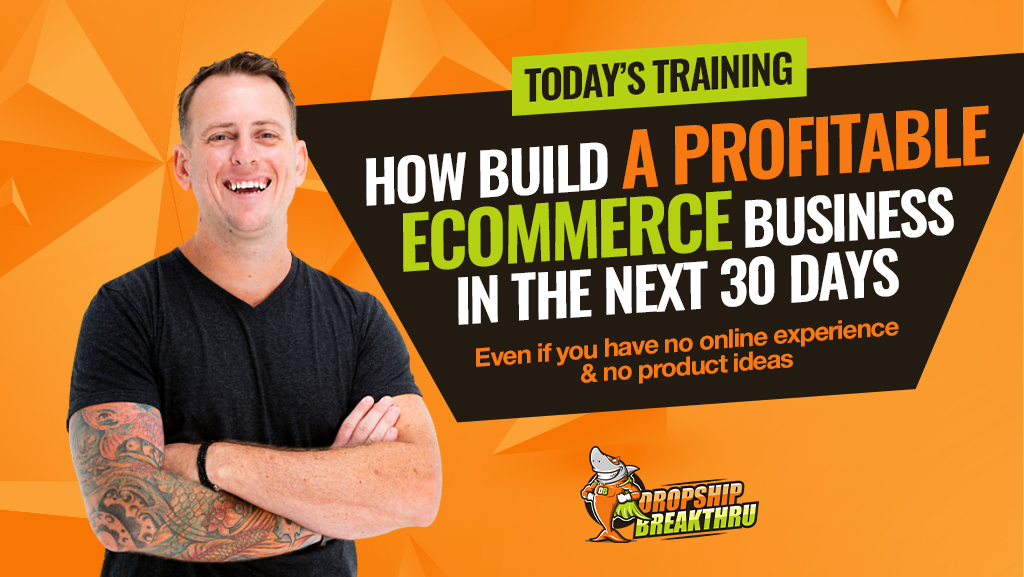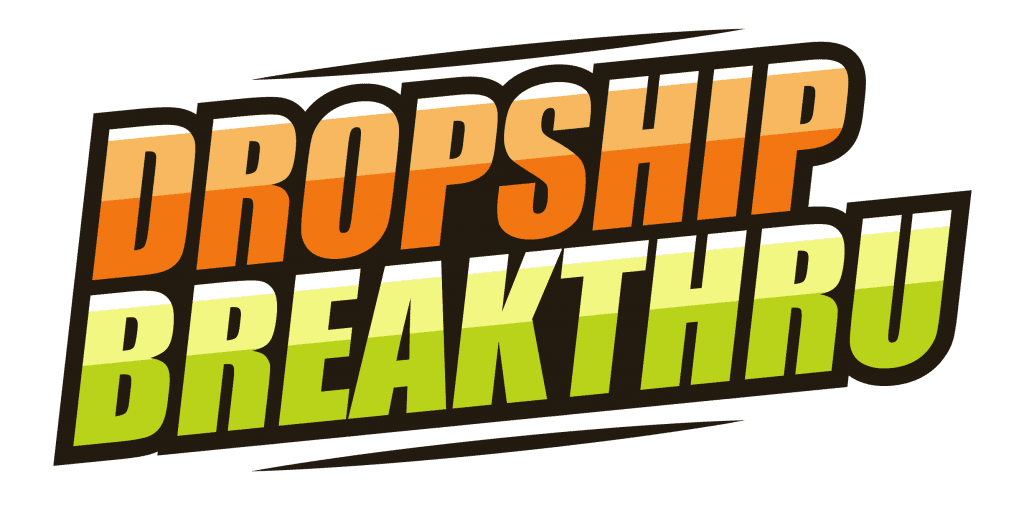Is Branded Dropshipping Worth Your Time?

Branded dropshipping is like running a restaurant that only serves microwaveable meals.
Sure, you can offer a variety of dishes without dealing with the complexities of cooking from scratch. But are these meals really up to your standards? Are they crowd-pleasers that keep people coming back again and again?
With branded dropshipping, you might avoid problems associated with manufacturing and inventory, but there are other issues to consider.
Let’s look at the realities of branded dropshipping, talk about its pros and cons, and give you an idea of how it stacks up against alternatives like high ticket dropshipping.
Watch it on YouTube
What Is Branded Dropshipping?
Branded dropshipping, also known as white labeling or private labeling, means you’re selling products from another company under your own brand name. This type of dropshipping offers a way to build your brand without needing to manufacture your own products.
First, you identify a white label product you want to sell, then apply your branding to the item. From there, you do the regular dropshipping routine:
- Build an online store
- Customers place orders
- The supplier ships out the products directly to the customer
- You handle customer service and returns
This strategy is similar to low-ticket dropshipping in many ways, and it comes with all of the same drawbacks.
With branded dropshipping, finding reputable companies willing to let you white label their products can also be challenging.
Many brands don’t see the advantage in allowing another business to sell their product under a different name. High-value products – the kind we recommend for high ticket dropshipping – aren’t usually available for branded dropshipping.
Pros and Cons of Branded Dropshipping
We’ll admit it: Branded dropshipping isn’t really our favorite business model for people who want to break into Ecommerce (or expand their existing online business).
Want to know why?
You know us, we’re gonna tell it like it is.
Let’s take a deep dive into the pros and cons.
Pros of Branded Dropshipping
Branded dropshipping does offer a few benefits. Here are some of the advantages of this approach:
Recognizable Products Under Your Brand Name
One of the main advantages is the ability to list popular products that already have market recognition, and sell them under your own brand name. Your branding can add a fresh and unique perspective to known products, which potentially helps you draw in a new customer base.
Potentially High Profit Margins
You set your own prices. This freedom can lead to better profit margins, especially if your brand targets premium customers.
Creative Control
You’re in charge of product presentation. You control packaging design, promotional materials, and your overall brand image. If exercised well, this creative control can set you apart from competitors.
Cons of Branded Dropshipping
Here are some challenges you might face with branded dropshipping (there’s more than a few):
Higher Costs
Customization and branding increase expenses when compared to traditional dropshipping. Trademarking your brand also adds to the cost.
Marketing
With your own brand, you handle all the marketing. You can’t necessarily leverage an existing demand, because no one is searching for your brand name online. This means you have to work harder to reach customers and make sales.
Building from Scratch
New brands start from zero. Gaining customers and earning their trust can be a tough uphill climb. Developing brand recognition and a loyal customer following requires consistent effort, time, and patience.
Product Sourcing Difficulties
Finding quality white label products to brand as your own can be difficult, especially if you want to source locally. Most dropshipping suppliers willing to let you rebrand their products are based overseas, which could mean longer shipping times.
Quality May Not Be Ideal
With branded dropshipping, quality might not always be up to your standards because items will be low ticket. And when you sell a product under your brand, any quality issues can do damage to your reputation. If you’re going to white label another company’s products, establish a reliable process for checking product quality.

Want to start your own high ticket dropshipping business?
Watch this FREE, on-demand training session that will uncover the exact steps you need to take to launch your first high ticket dropshipping business in the next 30 days.
Why High Ticket Dropshipping Wins
Branded dropshipping is similar to low ticket dropshipping because most suppliers of high ticket products don’t want sellers to white label their stuff.
So we’ll take a second to compare the differences between high ticket vs. low ticket dropshipping.
High ticket dropshipping, selling items $800+, has several advantages over low ticket. Those advantages include:
- Profit margins: Higher-priced items provide greater profit margins. You need fewer sales to reach the profit levels you want, compared to selling lower-priced products.
- Customer service: Fewer transactions at a higher price point per transaction means less of a customer service load on you. You can focus on marketing and taking great care of the customers you attract.
- Product quality: High ticket items are often better quality. This reduces return and complaint rates and keeps customers happier.
- Supplier relationships: Suppliers of high ticket items tend to be more reliable and professional, making them far easier to work with.
Branded dropshipping does offer a path into the world of Ecommerce. However, high ticket dropshipping will give you a stronger foundation for building a business that gives you the income and freedom you want.
Private Label Dropshipping Products: A Potential Use Case
If you have a product idea but aren’t sure about its market potential, branded dropshipping could be a useful approach.
Branded dropshipping allows you to gauge market interest and validate a product idea. All while avoiding shelling out a substantial upfront investment for manufacturing and product development. This is especially true if you’ve already built an audience that knows and trusts you.
If your branded dropshipping product sells well, you can consider investing more heavily in your own product development. You can improve the formulation or explore better manufacturing options.
For example, think about a fitness influencer that wants to launch their own protein powder line. They’ve built a dedicated following that trusts their advice on health and fitness. Instead of starting from scratch with manufacturing a new protein powder, they can use branded dropshipping to sell an existing product under their brand. This would let the influencer test the waters to see if their audience is interested in buying before they launch their own formulation.
The Triumphs and Pitfalls of Branded Dropshipping
To truly understand the pros and cons of branded dropshipping, let’s look at a couple of examples.
One business, let’s call them “Brand X,” saw some early success with branded dropshipping. They had a smart branding strategy and targeted a niche market, selling supplements under their own brand. At first, it looked like they hit the jackpot, with increasing sales and impressive profit margins.
But issues started to surface after the honeymoon phase. A handful of customers complained about product quality, which tarnished Brand X’s reputation. They struggled with sourcing reliable, high-quality products for white labeling. The brand eventually faded away due to quality issues.
On the other hand, “Brand Y” navigated the world of branded dropshipping more wisely. Like Brand X, they also selected popular products and rebranded them. However, they invested significantly in product quality checks and nurtured relationships with reliable suppliers.
Before launching their branded dropshipping product, they built a large audience that trusted their advice and were willing to buy on their recommendations.
Brand Y did face challenges like market saturation and strong competition, but their emphasis on quality and customer service helped them carve out a loyal customer base.
Most importantly: They tested their product idea with branded dropshipping, assessed their market, and then transitioned to selling their own developed products.
It is possible to succeed with branded dropshipping if you use it as a stepping stone rather than the ultimate destination.
But we believe you should use branded dropshipping cautiously and always look for better ways to establish a sustainable Ecommerce business.
Building a Better Ecommerce Business: Beyond Branded Dropshipping
While branded dropshipping can offer a quick entry into a market, it’s not the most reliable foundation for building a long-term Ecommerce business. Especially if you haven’t built up an existing audience.
Branded is okay in the beginning to gauge a market, but you should quickly pivot to bringing something unique to the market.
Once you’ve sold products in your retail store (high ticket dropshipping) you’re going to know your audience much better than anyone else.
You can then offer your own products to your already established audience and immediately build a meaningful brand as you’ll be addressing pain points you KNOW your customers have.
If you’re feeling inspired to take the next step, sign up for our free masterclass, which will teach you how to build and launch a high ticket dropshipping business in 30 days.



Want to start your own high ticket dropshipping business?
Watch this FREE, on-demand training session that will uncover the exact steps you need to take to launch your first high ticket dropshipping business in the next 30 days.

Article by Ben Knegendorf
Ben Knegendorf realized at 29 he needed to find another career path. Since then, he’s:
- Successfully exited a high-ticket drop shipping business that he helped take from $1 to $11M annual revenue in just 2.5 years
- Eliminated $40,000+ of personal debt
- Joined Dropship Breakthru as co-owner in 2021
© Dropship Breakthru 2024

